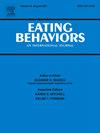Household chaos, child temperament, and structure-related feeding practices in toddlerhood: A moderation analysis
Abstract
Structure-related feeding practices may promote intuitive child eating behaviors and foster responsiveness to internal cues of hunger and satiety. Caregivers' ability to engage in structure-related feeding practices likely depends on a complex ecology of factors, including household- and child-characteristics. This study examined associations between household chaos and structure-related feeding practices, and the moderating effect of child temperament. Data were from 275 caregiver-toddler dyads from central Ohio. Child temperament was reported by caregivers when children were 18 months of age, whereas household chaos and structure-related feeding practices were reported by caregivers when children were 36 months of age. Multivariable linear regression models were constructed to assess the relationship between chaos and structure-related feeding practices. Interaction terms between household chaos and three dimensions of child temperament were tested to determine whether temperament moderated the relationship between chaos and structure-related feeding practices. Household chaos was not independently associated with structure-related feeding practices, but higher levels of child effortful control were associated with greater mealtime structure. There was a statistically significant interaction between household chaos and child temperamental surgency, such that greater levels of chaos were associated with less structured mealtimes, but only when children had low-surgency. Findings suggest household chaos and child temperament inform caregiver feeding practices, but the influence of chaos may depend on more proximal factors, like child temperament. Recommendations to improve caregiver-child feeding interactions should be sensitive to characteristics of the broader family home environment.

 求助内容:
求助内容: 应助结果提醒方式:
应助结果提醒方式:


